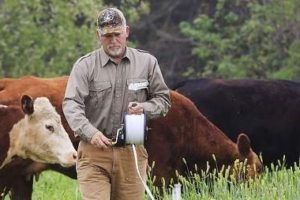USDA Fact Sheets from a Conservation Innovation Grant between NRCS and Virginia Tech
The USDA fact sheets described below were developed from a Conservation Innovation Grant with Virginia Tech titled, Demonstrating conversion of wildtype to novel endophyte fescue pastures for greater livestock performance and better environmental outcomes. Follow this link https://vaforages.org/resources/publications/ to the Publications tab to view the fact sheets and learn more about fescue toxicosis, fescue sampling, strategies for mitigation, conversion to novel endophyte and management after conversion.
Fescue Toxicosis – What It is and How It Costs You
- This fact sheet explains in simple terms the fungal endophyte that infects fescue plants, the toxic alkaloids it produces, the symptoms exhibited by affected livestock, the resulting negative impacts to the grazing animal, the environment and the economic impact to the bottom line.
Sampling Tall Fescue for Endophytes and Alkaloids
- This fact sheet explains how to properly sample and test for endophyte infection of fescue and the toxic alkaloid concentration including when and how to sample pastures, where to send the samples then how to use the test results.
Strategies to Mitigate Tall Fescue Toxicosis
- This fact sheet provides strategies for mitigating the effects of toxic endophye fescue by understanding how toxic alkaloid levels change by season, the effect of dilution by other forages, and understanding toxic alkaloid levels in stockpiled fescue, dry hay, baleage or silage and effective strategies for improving livestock performance.
Converting from Wildtype to Novel Tall Fescue
- This fact sheet explains the difference between toxic endophyte, endophyte free and novel endophyte fescue; considering renovation to novel endophyte fescue, minimum acreage to convert, removal of the toxic fescue and conversion to novel endophyte fescue.
Managing Novel Tall Fescue for Persistence
- This fact sheet addresses questions about novel endophyte fescue persistence, management of new stands and simple management reminders to avoid recontamination with toxic fescue.
Extend Grazing with Summer Stockpiling
- This fact sheet explains the practice of summer stockpiling fescue or mixed grass stands as a strategy for extending the grazing season. It includes a 5-step strategy diagram to visualize cattle and deferred grazing management while planning for and using this technique from early spring through the following winter.
.



